Not every merchant out there has a lot of scruples, and fakes and forgeries run deep in the mineral trade. Depending on where you are and what you’re buying, these range from a difference of getting scammed for a few bucks or ending up in the middle of four figures of losses. Anyone who likes to purchase stones needs to be careful.
Outright Fakes
I’m excluding a few things from this category, just to make it easier to point out real fakes. These include things like dyed Brazilian agate and heat-treated amethyst being sold as citrine. These are both standard practices for the most part and should be assumed by a knowledgeable buyer.
I’m also excluding aura crystals, since most collectors know that they’re just quartz crystal that are coated with metallic oxides.
There are some materials that are 100% fake on the market, however, and you should simply avoid them.
Often, these make for a good way to check out just how reliable a vendor is. With the exception of the second one, these are generally sold as completely natural and are outright fabrications.
1. Andara Crystals
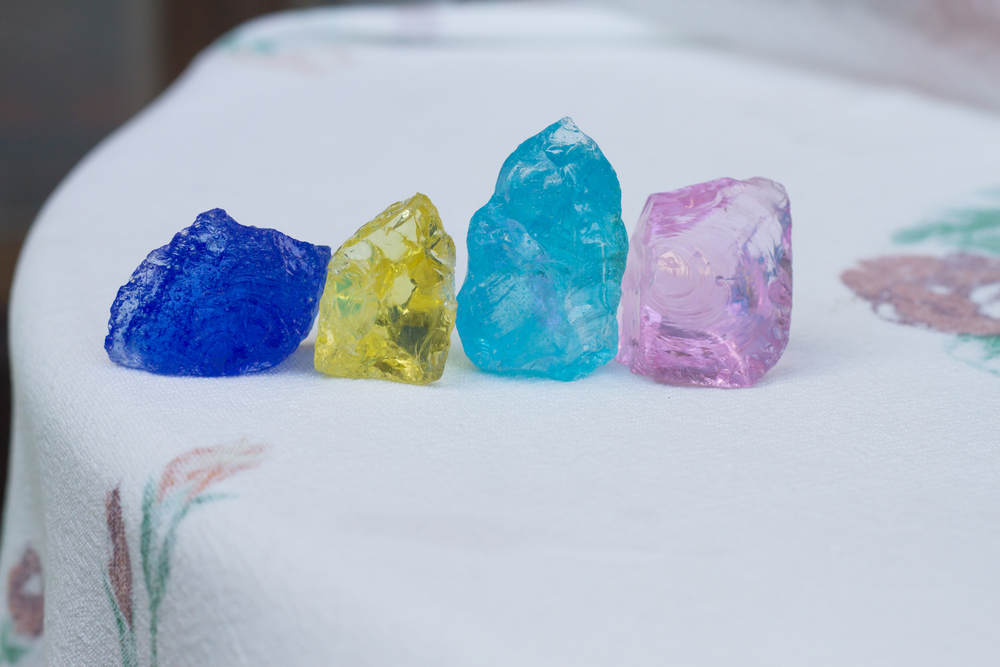
I cannot describe to you how much I hate seeing people buying these. While the originals were often pretty cullet glass, the modern ones don’t even have that going for them since people figured out you can just melt down glass scrap with a microwave kiln.
Andara crystals are a heady subject in some circles, which I avoid. The legend is that an elderly shaman woman, Lady Nellie, found a crystal on her altar and then dug around the mountain she lived on to find more.
More than that, Andara material is always sold with extreme claims about spiritual properties. It’s a scam from the ground up, and it’s been a lucrative one for some time. Pieces are often sold for hundreds of dollars when you can pick up a chunk the size of your head for a couple of bucks on eBay or in a landscaping specialty store.
If you’re interested in learning more about the scam I’ve covered it in fairly exhaustive detail in a past article.
2. Dragonskin Agate
I don’t hate dragonskin agate, but I’ve seen it sold as natural entirely too many times. The stone itself is an agate with a fractured internal structure with different colored veins running through it. The veins are often pink or green.
It’s about as far from natural as you can get while starting with a real stone.
Dragonskin agates are usually Brazilian colorless agate to start with. You heat them up slowly, and then they water quench the material while it’s still hot. At the right temperature, thermal shock will break the internal structure of the agate up while not turning the whole thing into tiny pieces.
This material is then dyed and worked into cabochons or small decorative objects. Check the description if you see a vendor is selling this, it is sometimes sold by reputable vendors. If they disclose the process, they may still be a good source of minerals. If not, give them a pass.
3. Transparent, High Color Saturation Obsidian
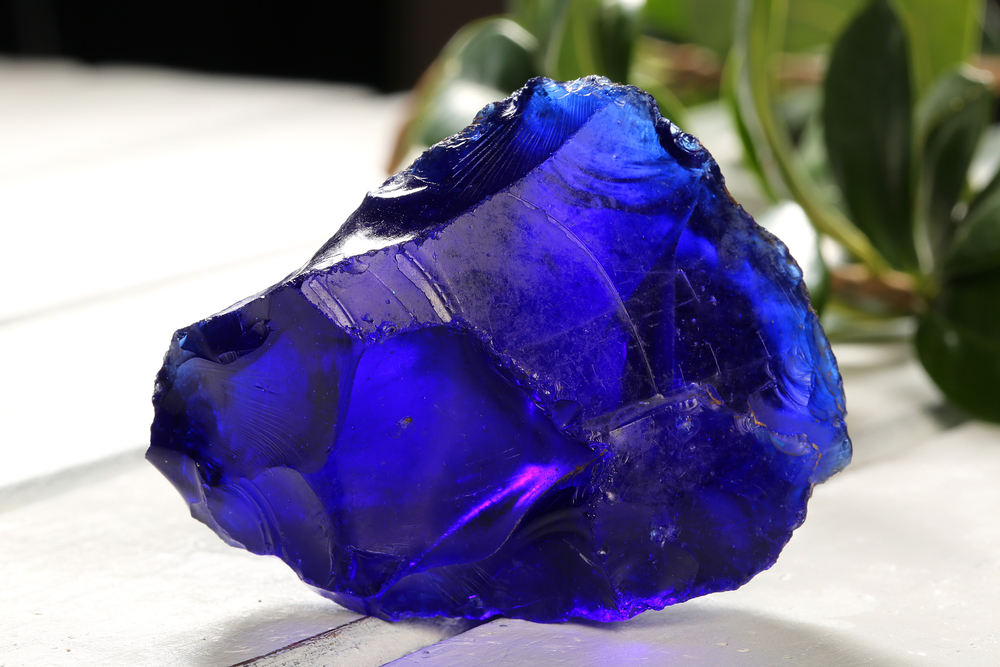
One of the more irritating things I run across is art glass being sold as obsidian at inflated prices. It doesn’t make sense, in all honesty, because the price increase is relatively minor from standard cullet glass and you risk destroying your reputation.
There is colored obsidian out there. I’ve seen the occasional shot of dark green obsidian, for instance, but it generally appears as a shimmer similar to the various sheen obsidian types and this kind of obsidian never has high clarity.
But cobalt blues, ruby red, transparent emerald greens? They don’t exist in nature and they’re not obsidian.
For me, this is perhaps the litmus test for a vendor who may appear otherwise reputable. If they’re selling art glass as obsidian, they’ve lost my business entirely.
Just go find the glass sold for landscaping purposes if you want this sort of thing. It really is pretty stuff, and you can cut, knap, or otherwise work it however you like. Just don’t give money to scammers trying to pull a couple of extra bucks per pound by claiming it’s some rare natural material.
4. Azeztulite
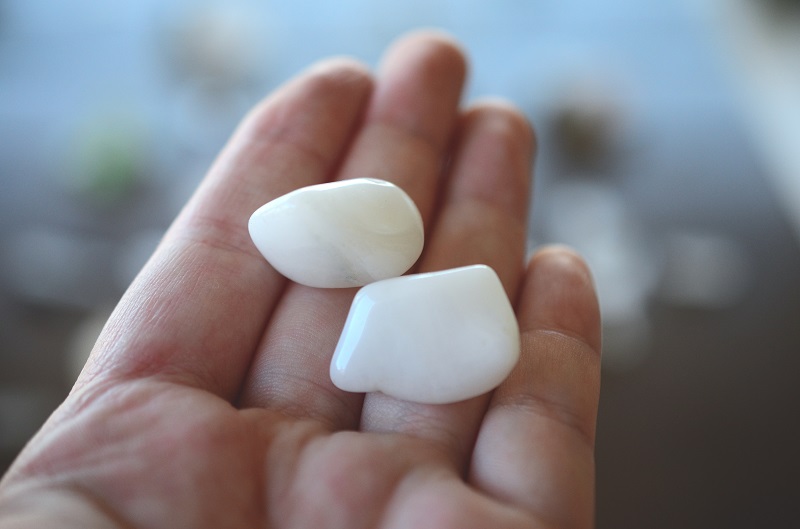
One of the more common scams is for sellers to take something common and then hype it up. Azeztulite is one of the more egregious offenders and it’s a good sign that you should just walk away from the offender. It’s really not alone in how the scam is run, so try to recognize the structure of the scam and you may be able to avoid problems.
Azeztulite is marketed with its spiritual properties at the forefront. It’s reputed to enhance other crystals. The first instance of the name came in a
In actuality, the most common form of azeztulite you’ll run into is just massive quartz. The same stuff is used in landscaping. I have a pile of the stuff on the porch because I don’t have the heart to tell my godkids I’m really not interested in collecting everything that sparkles a bit when the sun hits it right.
The “special” azeztulite is generally just broken pieces of medium-sized quartz points. Or even just quartz points! A quick search for this article’s purposes shows a sphere of milky quartz about the size of a bowling ball is a bit over $100. A similarly sized sphere sold as azeztulite is listed for over $2,000!
There are tons more of these. They generally focus on increasing the value of a common stone (i.e.: quartz, calcite) by giving it a pseudo-spiritual background. There will be a lot of information on what it does and how it can help you, with as little as possible on what it actually is.
This one is particularly bad due to the coinciding of the
Indigo gabbro is dirt cheap… until it’s labeled as merlinite.
Ten years from now I’ll be explaining the next one. It’s a never-ending cycle but it’s one that can be interrupted by educated buyers and a refusal to be wowed by a fancy, official-sounding trade name.
Markets Flooded With Fake Material
While the above focuses on stones that are almost always sold with the intent to deceive, the following markets are generally legitimate but have enough fake material out there that it becomes a buyer-beware situation. While the seller may not intend to deceive in these cases, they’re common enough that secondhand sales and unwary vendors will have them regularly.
1. Moldavite
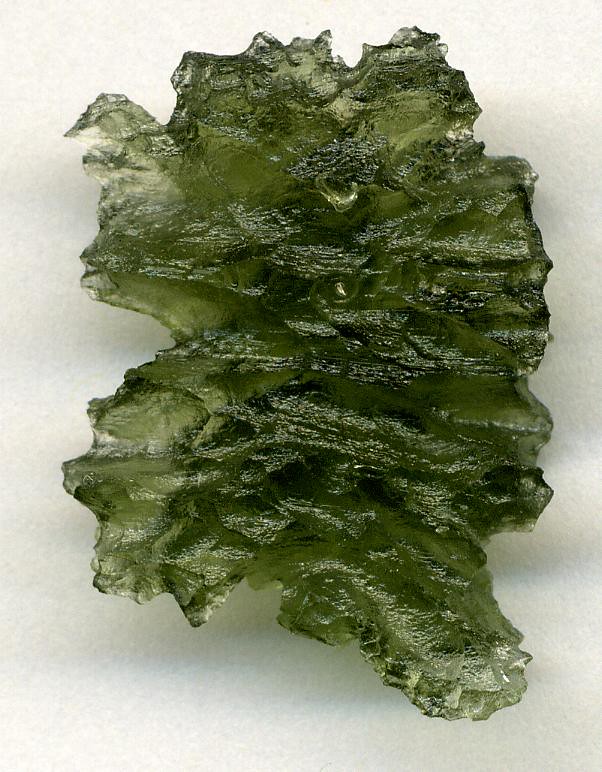
Moldavite is, without a doubt, one of the worst offenders in this regard. We’ve touched on this before, but the recent popularity of the stone, fueled by social media, has caused an explosion in fakes.
Tektites, such as moldavite, are generally glassy materials. In the case of moldavite, it resembles common green bottle glass, although the real stuff is generally earthier in coloration. Moldavite was created during the impact of a meteor, throwing silica-rich soil together as a molten mess due to the heat created by the impact. That… also means bubbles are totally natural in it which eliminates one of the easiest methods of sorting out fake stones and crystals.
There is probably more fake moldavite out there than there ever was moldavite in the ground. It’s not like this is a new process either. In fact, the older fake moldavite almost universally hails from the Czech Republic.
Checking your source for the material is imperative. There’s no reason for bulk moldavite to be sold outside of the region it comes from, so resellers in India and China are a big tell. The material is incredibly limited and subject to heavy harvesting as well.
Personally, I just won’t buy it. Whether it’s a finished piece of jewelry or rough chunks, the current price is too high to risk messing around with it and the fakes are always getting better.
2. Malachite
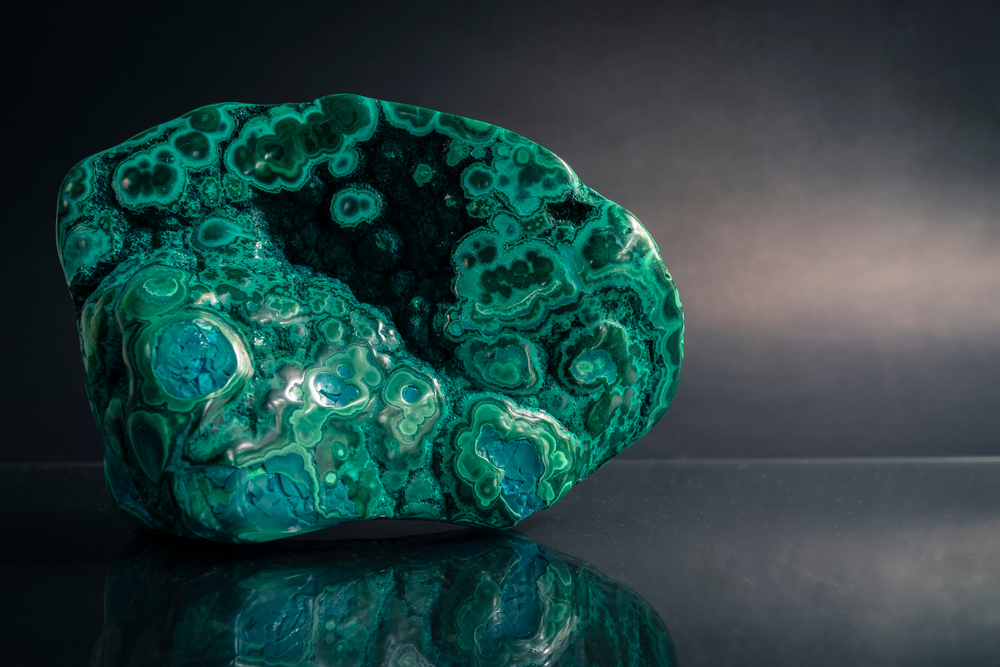
Malachite is a beautiful stone, and a lot of it is real. It’s also fairly high-priced, so there are a lot of fakes on the market. These are relatively easy to identify in person, but online purchases can make it more difficult.
Most fake malachite is made with polymer clay. It will feel like plastic, be room temperature, and generally not remind you of stone or glass. The lines will also be oddly regular, which generally isn’t the case in natural specimens.
Coloration in these lines may be regular as well, which is very unusual in malachite. Generally the lines will all be different shades of green, but rarely will you have an actual repeating pattern. This is easiest to find when exceptionally light colored lines are used.
Reconstituted malachite is also found. This is material that’s been ground to dust (or recycled from standard cutting) and then reformed with epoxy or resin. These still generally don’t pass an in-person inspection but aren’t quite as obvious as the plastic form.
Be wary when purchasing it. I’ve yet to see fake specimens show up, but it’s only a matter of time. Unethical sellers are quick to take advantage of the high desirability and easily replicated patterns found in most botryoidal samples of the material.
The biggest target for this type of faked stone is the lower-end market. The plastic costs pennies on the dollar to what actual malachite costs and can be sold to undercut merchants. This has created a really weird situation, where people think malachite costs less than it actually does and so authentic malachite is generally seen as being priced to rip them off by those who don’t know better.
3. Turquoise
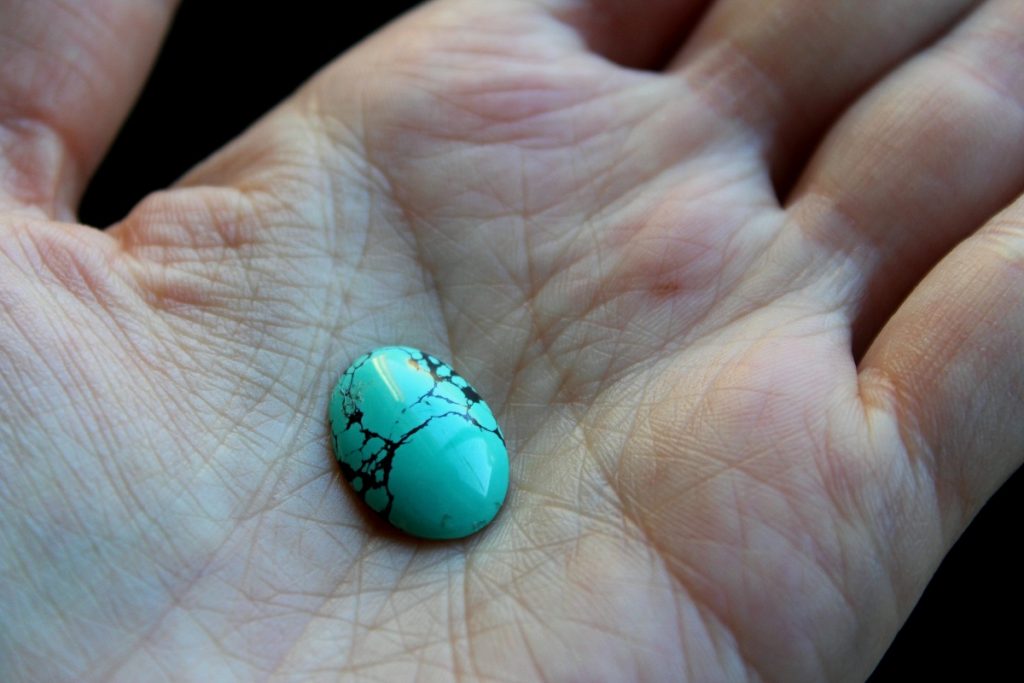
Turquoise is… complicated. The love of the soft gemstone has permeated America and people will absolutely forgive treatments in the material they’d find unthinkable in other circumstances. The majority of the market is treated, especially material pulled in the last decade or so.
I draw the line at disclosure, personally. If the treatment is disclosed, then I’ll generally not question it too much. I rarely work with it anyways, and generally source it directly from miners when I do use it.
But there are also some really shady practices. A lot of commercially available turquoise, especially at the consumer level, is dyed howlite. The similar vein structure can be deceiving even with a practiced eye and generally acetone is required to test for the dye.
Then you have provenance. Turquoise varieties are often highly localized, which means that certain mines produce material that’s more expensive. Lying about provenance is easy, and if it can command a higher price… someone out there will do it.
So, the key to buying turquoise is to know who you’re buying from. While turquoise is fairly widespread, it’s also rare and many mines are now closed. Because of this, there are a number of people who specialize in the material and they’re generally your safest bet but that expertise does come with a bit of cost.
Lower-priced pieces should be assumed to be treated and anyone serious about buying turquoise would do well to educate themselves on the market as a whole before spending a substantial amount of money. Regardless, there’s a lot of education required to confidently purchase turquoise.
4. Citrine
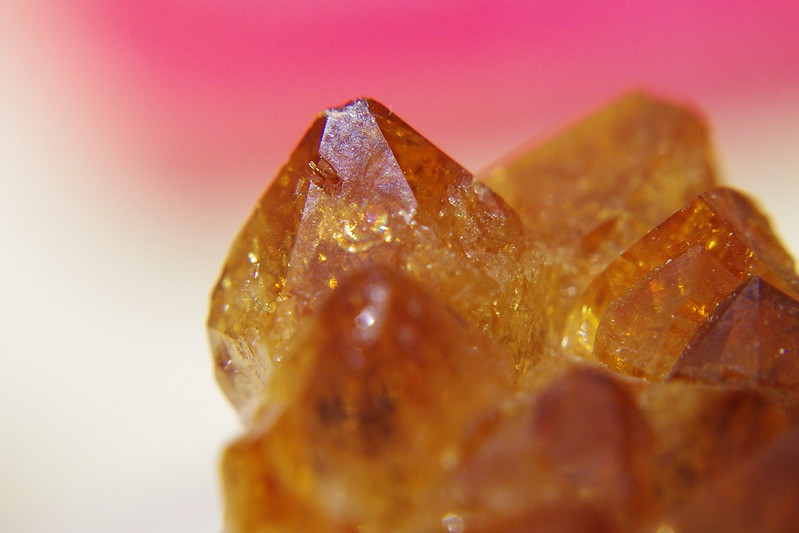
Most citrine sold as faceted gemstones was amethyst when it was pulled from the ground. Citrine is quite rare due to the higher temperatures required for its formation and has an almost identical chemical composition to amethyst. So, the standard procedure is just to heat up some amethyst.
It’s almost never disclosed in the world of gemstones. Assume it’s been done to any cut stone you buy unless you have strong evidence to the contrary. It’s pretty widely known and even specific varieties like Madeira citrine are heat-treated amethyst. It’s just the way it is.
Mineral samples are where I think that buyers should show some concern. Something sold as a natural sample of a mineral should be that mineral as pulled from the Earth. Unfortunately, you can double your money by just heating up a piece of amethyst so it’s fairly common.
The most common sign that a citrine was originally formed as an amethyst is that it looks a bit “toasted” with color zoning going more towards the base. Sometimes the tips of the crystals will bleach as well. This is especially common with Brazilian material, where there’s a lot of amethyst but not much citrine.
Samples with the burnt look are always suspect, but so are single points for that matter. I wouldn’t be 100% on a sample unless I pulled it from the Earth myself at this point. Just be aware that when buying citrine… well, it’s probably heat-treated amethyst and it’s up to you to decide if that’s acceptable or not.
Read more: Heat Treated Amethyst vs Citrine
A Word About Precious Gemstones
I’m not a gemologist, so I can only advise people on specific properties of gemstones and let them do the testing. This is the worst market for fakes, and even experts get taken in on occasion.
When it comes to cut, classic gemstones there’s a range of things to worry about. Treatments not being disclosed is a fairly common practice.
I’m not a purist, personally, and I don’t particularly care if a sapphire was heat-treated or an emerald was oiled as long as it matches the project.
But, I don’t spend a whole lot on my gemstones (comparatively) and for precious gemstones I often just go the synthetic route for things like ruby or emerald when I use them.
Due to the complexities in figuring out what’s going on, I strongly advise that people who don’t know what they’re doing steer clear of purchasing expensive cut gemstones. You also need to be very careful with rough material.

